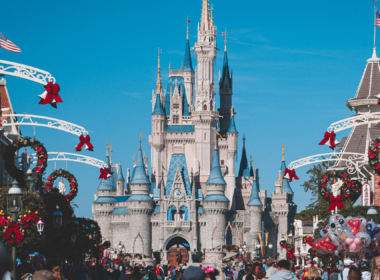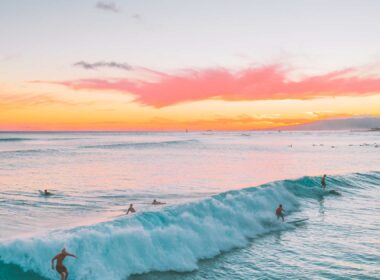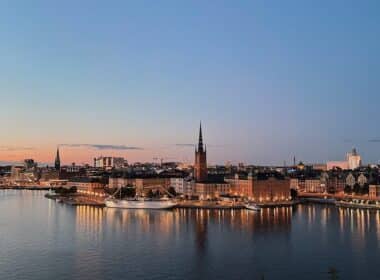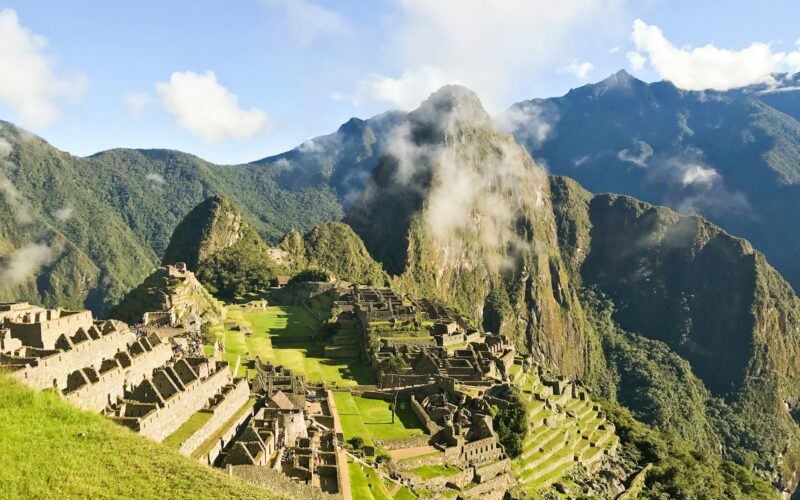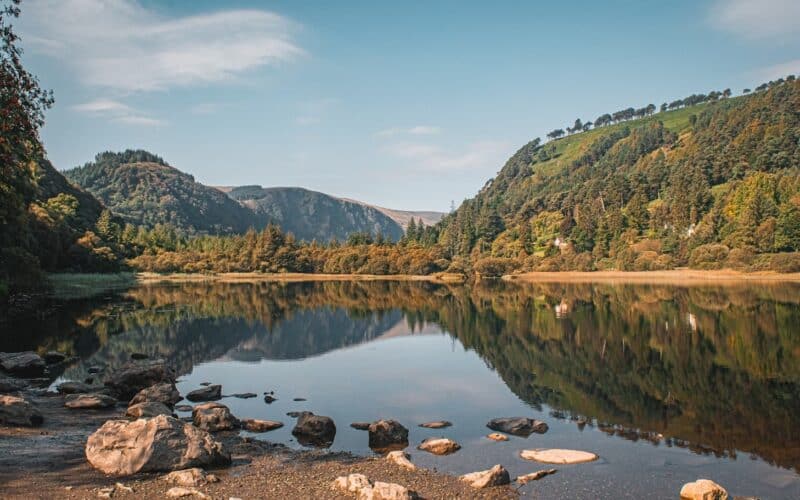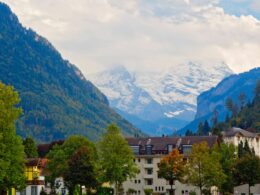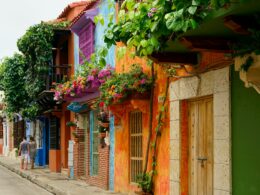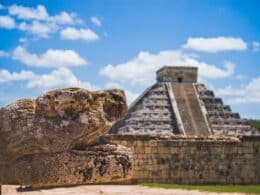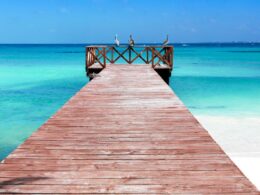Have you heard this iconic theme song from The Mysterious Cities of Gold, the 90s cartoon that introduced entire generations to Peru? You know, the one that goes : “Child of the sun, you travel the earth and sky aboard the great Condor, searching for the Cities of Gold…”
This show, with episodes often concluded by documentary excerpts, might have sparked your own insatiable desire to visit Peru! This magnificent country in Latin America, the cradle of many pre-Columbian civilizations, is full of cultural, gastronomic, architectural, and natural treasures to discover.
To enjoy an unforgettable trip a la peruana, Trazler is here to share its best advice for planning a dream 15-day adventure. “Que tengan un viaje bien chévere!” (Have a great trip), and get ready for an unforgettable experience!
From Ceviche to Machu Picchu: the top reasons to visit the land of the Incas
A brief history and geography lesson before you land
Still mysterious and lesser-known, Peru’s history is rich and fascinating. The country witnessed the rise of great civilizations with invaluable knowledge and was shaped by Spanish conquest, independence, and its evolution towards modernity.
Peru was the cradle of many ancient civilizations. Among them, the Caral civilization (circa 3000 BC) is one of the oldest in the Americas. Peruvian archaeology has also studied the legacy of cultures like the Chavín, Mochica, Nazca, and Lima.
Of course, the most famous of them all is the Inca civilization (13th-16th century), which established one of the largest pre-Columbian empires in America, the Tahuantinsuyo, with Cuzco as its capital and Machu Picchu as its imperial citadel. Today, it stands as one of the New 7 Wonders of the World!
In 1532, the Spanish invaded the weakened Inca Empire, ravaged by internal conflicts. This conquest led to the assimilation of Peruvian lands. Lima, founded in 1535, became the administrative center of the Viceroyalty of Peru. During the colonial era, Peru’s resources were exploited for the benefit of Spain, and the native population suffered under a highly hierarchical society.
Peru declared its independence in 1821. The 19th century was marked by power struggles between young Latin American nations, motivated by the control of resources. Peru experienced internal armed conflict during the 1980s and 1990s, and its democratic transition still faces socio-political challenges.
A vibrant culture, between influences and resistance
A cultural gem of Latin America, Peru is a fascinating melting pot of indigenous, European colonial, and African influences, the result of centuries of history that have given the country an immense cultural and heritage wealth that draws millions of visitors each year.
While visiting Peru, make sure to explore the arts. Pre-Columbian traditions of the Mochica, Nazca, and Inca, among others, produced finely crafted ceramics, textiles, and goldsmithing, which continue to influence local crafts. Colonial art can be seen in the historic buildings of cities like Cuzco and Lima, while contemporary and urban art is flourishing.
Peru is highly musical and full of dance. First, the traditional music of the Andes is often sung in Quechua, accompanied by Andean flutes. Afro-Peruvian music is known for its powerful rhythms, played on the “cajón” (a wooden percussion instrument). Criolla music blends indigenous, Spanish, and African cultures. Finally, contemporary popular music (salsa, cumbia, chicha) incorporates these various influences.
Lastly, Peru’s unmissable highlight is its gastronomy, globally renowned for its diversity, refinement, and fusion of Andean, Spanish, African, Asian, and Amazonian traditions. Here are a few dishes to try:
- Ceviche, the national dish, consists of raw fish marinated in lime juice, served with corn, sweet potatoes, and peppers.
- Lomo saltado, stir-fried beef with onions, tomatoes, and fries, is a perfect example of the fusion between Chinese (chifa cuisine) and Peruvian food.
- Ají de gallina, a creamy dish made with shredded chicken in a sauce of yellow peppers, cheese, and milk, served with rice and potatoes.
- Cuy (guinea pig) is a traditional dish in the Andes, roasted or fried and served during special events.
- Pachamanca, an ancient dish cooked in an underground oven, combining various meats, potatoes, corn, and herbs.
- Chaufa (fried rice) is emblematic of the Sino-Peruvian culinary fusion.
- Alfajores (shortbread cookies with caramel), mazamorra (fruit pudding), and tropical fruit-based desserts are all worth trying!
- Pisco is the national alcohol, used in cocktails like the Pisco Sour, a refreshing drink made with pisco and lime juice.
- Chicha morada is a non-alcoholic beverage made from purple corn, flavored with cinnamon and cloves.
Costa, Sierra, and Selva: landscapes for all tastes!
Nestled along the Pacific coast of South America, Peru is a treasure trove of landscapes and biodiversity. The country is traditionally divided into three main geographical regions:
- The Costa (coast), stretching about 2,500 kilometers along the Pacific Ocean, is mostly desert with a few fertile valleys. The main cities are Lima, Trujillo (north), and Arequipa (south). The coast has beaches, important fishing areas, and historical sites like the famous Nazca Lines.
- The Sierra (Andes) covers the world’s longest mountain range, running north to south through Peru. It is the heart of the ancient Inca Empire, with the iconic city of Cuzco. The Peruvian Andes boast some of the highest peaks in South America, including Huascarán (6,768 meters), and influence the country’s climate and culture. They also house Lake Titicaca, located at 3,812 meters on the border between Peru and Bolivia.
- The Selva (Amazon rainforest) covers the eastern part of the country, a vast and sparsely populated region. Its biodiversity is exceptional, with numerous unique animal and plant species. Cities like Iquitos or Tarapoto serve as gateways to this tropical forest.
Essential tips for planning your Peruvian adventure
When to visit Peru?
To plan your Peruvian adventure, you first need to choose the best time to visit. Here’s an overview of the different seasons:
- From november to april: this period is perfect for enjoying the coastal region (Lima, Trujillo, Ica, Nazca), as the climate is sunny and summery. However, the weather will be wet in the Amazon and the Andes, but Machu Picchu will be less crowded.
- From may to october: the weather is ideal for trekking in the Andes (Cuzco, Machu Picchu, Arequipa, Lake Titicaca), dry and sunny. It is also the dry season in the Amazon, making it the best time to explore the jungle. The coast will be less summery, but northern and southern beaches remain pleasant.
You can also choose your visit based on traditional festivals, which are deeply embedded in Peruvian culture and rich in folklore. For example:
- Inti Raymi, celebrated in June in Cuzco, is a re-enactment of the ancient Inca festival dedicated to the sun god Inti, with dances, rituals, and processions.
- The Feast of the Virgin of Candelaria, held in February in Puno, is a mix of Catholic and indigenous traditions, featuring colorful parades, music, and folk dances.
- Semana Santa is celebrated with religious processions throughout the country, particularly in Ayacucho, known for its impressive ceremonies.
- The Independence Day Festival (Fiestas Patrias) takes place on July 28 and 29 across Peru, with military parades, concerts, fireworks, and parties.
- Pachamama Day (Mother Earth Day) is celebrated in August in the Andes, honoring the earth goddess Pachamama, a deity revered in Andean culture. It’s a great opportunity to learn more about the Andean worldview and spirituality.

Useful information to blend in like a local
Peru has many languages and dialects, including Quechua and Aymara. The official language is Spanish, spoken throughout the country. Learning a few words of Spanish is recommended to help you navigate.
The official currency is the Peruvian nuevo sol, abbreviated “S/.” One euro is equivalent to about 4 soles. You can pay by card in most shops in major cities, but it’s best to carry cash.
Accommodation and transport options for the best Peruvian experience
When traveling in Peru, there are a variety of accommodation options for all types of travelers and budgets:
- Hotels: ranging from budget to luxury, available in major cities and popular tourist spots. Choices include modern chains and local budget hotels offering simple, convenient stays.
- Hostels: an affordable option in tourist areas, offering shared dorms or private rooms at low rates, often with social activities like tours and events.
- Guesthouses: these offer more personalized service, comfortable rooms, and often include breakfast. They provide a more authentic experience with local recommendations.
- Eco-lodges: located in natural areas like the Amazon, Sacred Valley, or Lake Titicaca, eco-lodges focus on sustainable tourism and environmental conservation.
- Vacation rentals (Airbnb): popular in big cities and tourist areas, offering a range of price points.
- Specialized options: some destinations feature unique accommodations, such as luxury resorts, mountain refuges, or campsites.
For transportation, travelers can move around the country in several ways:
- By plane: given Peru’s vast size, domestic flights are often a quick option. Main airlines include LATAM, Sky Airline, and Viva Air, with reasonable prices for domestic routes.
- By bus: a popular method for long-distance travel. Companies like Cruz del Sur, Oltursa, Civa, and MovilBus offer comfortable trips with reclining seats.
- Taxis: common and affordable for city travel. It’s safer to use official apps (Uber, DiDi, inDriver, Yango, Cabify). In smaller towns, moto-taxis are prevalent.
- Train: while Peru lacks a national rail network, a few train routes provide scenic journeys, such as the train to Machu Picchu or the Andean Explorer connecting Cuzco, Puno, and Arequipa.
The ideal 15-day itinerary for an unforgettable stay in Peru
Budgeting for a two-week trip
To plan a 15-day trip to Peru, it’s essential to set a budget. Here’s an overview of key expenses:
- Transport: flights to Lima cost between €600 and €1,200. Domestic flights range from €50 to €150, and bus trips between €15 and €60. Taxi rides generally cost €2 to €5.
- Accommodation: expect to pay between €10 and €20 per night for hostels, and €30 to €60 per night for hotels.
- Food: meals at local restaurants range from €3 to €7, mid-range restaurants cost €10 to €20, and fine dining costs between €30 and €50.
- Activities and entrance fees: entry to Machu Picchu is €40 to €60, depending on the route. Other sites typically cost between €10 and €20. A private guide ranges from €30 to €80, and organized tours can range from €50 to over €200.
- Souvenirs and insurance: set aside between €20 and €100 for souvenirs, and €30 to €100 for two-week travel insurance.
Peru’s must-see attractions
Peru is filled with breathtaking sites that combine natural beauty, rich history, and cultural heritage. Don’t miss:
- Machu Picchu: the iconic ancient Inca city, a masterpiece of architecture and an archaeological wonder.
- Cuzco: the former capital of the Inca Empire, a blend of Incan and colonial cultures, listed as a UNESCO World Heritage Site.
- Sacred Valley: a stunning region filled with traditional villages and remarkable Inca ruins.
- Lake Titicaca: the world’s highest navigable lake, sacred to Andean peoples.
- Arequipa: known as the “White City” for its sillar stone buildings, surrounded by volcanoes and near the Colca Canyon, home to soaring condors.
- Nazca Lines: mysterious desert carvings depicting geometric shapes and animals, visible only from the air.
- Lima: the Peruvian capital, rich in colonial history and home to a globally renowned food scene.
- The Amazon rainforest: a nature lover’s paradise with incredible biodiversity.
- Huaraz and the Cordillera Blanca: stunning landscapes, snow-capped mountains, turquoise lakes, and unforgettable trekking routes.
- Paracas and the Ballestas Islands: perfect for marine wildlife watching.

The ideal 15-day Peru itinerary
Now we’re getting to the heart of the alfajor (if you’ve been following along closely!): Trazler’s ideal itinerary for a perfect two-week adventure in Peru. Vamos!
Days 1 & 2: Arrival in Lima and exploring the capital. Rest in Lima after your international flight. Stay in the vibrant neighborhoods of Miraflores or Barranco, and explore them. Then, visit Lima’s historic center, including the Plaza Mayor, the Cathedral where Francisco Pizarro is buried, and the San Francisco Monastery with its catacombs.
Try the restaurants in Barranco and Miraflores with views of the Pacific Ocean. Later, visit the Larco Museum or the National Museum of Archaeology to learn about pre-Columbian civilizations.
Days 3 & 4: Head south to Arequipa. Discover the charming “White City” of Arequipa, its Plaza de Armas, the colorful Santa Catalina Monastery, and the stunning views of the volcanoes from Yanahuara viewpoint. Visit the Museum of Andean Sanctuaries to meet the mummy of Juanita. Don’t forget to try local specialties like queso helado and rocoto relleno.
Days 5 & 6: Journey to Colca Canyon, one of the world’s deepest canyons, for impressive landscapes. Visit traditional villages and hot springs along the way. Enjoy a hike and observe the majestic condors.
Days 7 & 8: Travel to Puno, crossing the high Andean plateau, and take it easy your first night to adjust to the altitude. The next day, enjoy a tour of Lake Titicaca, visiting the floating Uros Islands and exploring Taquile or Amantaní Islands.
Days 9 & 10: Off to Cuzco! Take a scenic route to Cuzco with stops at the Inca temple of Raqchi and Andahuaylillas Chapel. In Cuzco, explore the historical center. Visit the Temple of the Sun (Qorikancha), the Cathedral at Plaza de Armas, and stroll through the San Pedro Market and cobblestone streets of San Blas. Don’t miss the nearby Sacsayhuamán ruins.
Days 11 & 12: Explore the Sacred Valley, visiting the Pisac ruins, Moray’s agricultural terraces, and the salt mines of Maras. Be sure to visit the local craft markets. Next, explore Ollantaytambo Fortress before taking the train to Aguas Calientes in preparation for Machu Picchu.
Day 13: Rise early for your Machu Picchu adventure. Book a guided tour of the citadel and, for the more adventurous, climb Huayna Picchu for panoramic views. Return to Cuzco in the evening.
Days 14 & 15: Head back to Lima and take a museum tour, including the LUM (Place of Memory), MALI (Museum of Art), and MAC (Contemporary Art Museum). Enjoy the coastal promenade and sample some more of Peru’s amazing cuisine. Before you know it, it’ll be time for your departure.
If you have more time or want to adjust the itinerary, you can head to Huaraz for hikes in the Cordillera Blanca, explore the Peruvian Amazon from Iquitos or Puerto Maldonado, or fly over the mysterious Nazca Lines.
Peru offers some of the best diversity in Latin America in terms of travel and adventure options. It’s an ideal vacation destination blending fascinating culture, breathtaking nature, and amazing cuisine. You’ll want more!
Peru fits every budget and charms every type of traveler. Whether it’s grumpy llamas, colorful Andean mountains, adorable sloths, or sunsets over the Pacific, the whole family will fall in love with Latin America.If you enjoyed our 15-day itinerary and are craving a delicious ceviche, visit us at Trazler! Our online platform lets you book your entire trip (flights, accommodations, transportation) all in one place at the best prices. ¡Les esperamos en Perú, amigos!
In Peru, be sure to visit Lima, the capital, the imperial Inca city of Cuzco, and the Inca citadel of Machu Picchu. Also, explore Lake Titicaca, the city of Arequipa and its Colca Canyon, the Cordillera Blanca, the coastal beaches, and the Amazon rainforest.
Peruvian cuisine is of excellent quality. Try the national dish ceviche and the cocktail pisco sour, as well as lomo saltado, ají de gallina, and the fusion of Chinese and Japanese cuisines. Don’t forget the fruity Peruvian desserts!
Make sure to book your transportation, accommodations, and tours in advance. Also, arrange your travel insurance and prepare for temperature variations as you plan your itinerary.
